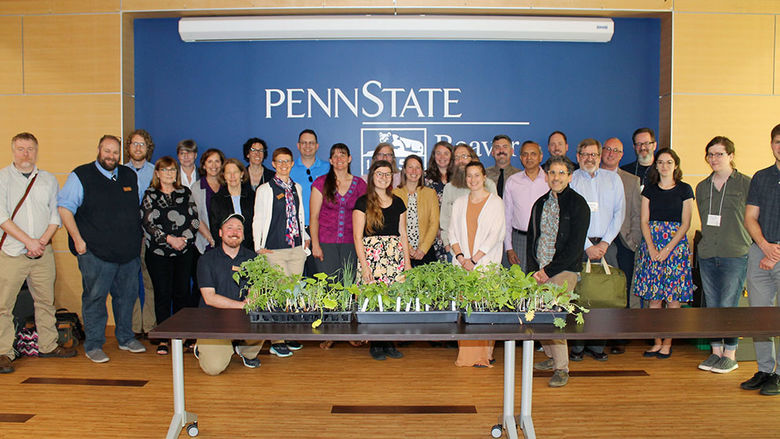A group of young men stand around a vehicle — snippets of their conversation reveal they're discussing the operation of that vehicle: "... torque ... shunt wound motors ... a lot of machinery ... needs more power ..."
And then "this can do a lot more than mow grass."
Mow grass?
It turns out they — three seniors at Penn State Altoona — are discussing their senior project, a solar-powered Cub Cadet lawn tractor.
Nick DeVitis, Robert Hahn and Chris Latsios, with Professor of Engineering Sohail Anwar as their adviser, put their heads together to come up with a senior project that was interesting, workable and (very important) affordable.
As happens with every senior project, the three students tossed around a couple of ideas before coming up with a solar-powered lawn tractor.
Reasons for that choice? (1) There are none in mass production, meaning the market is open for one; (2) battery life has improved significantly since the first attempts to build a solar-powered lawn tractor, making it far more efficient; and (3) Latsios had an older Cub Cadet 2185 sitting in his backyard.
In order to make the conversion from gas to solar power, while keeping the original model "as much as possible," said Hahn, the students replaced the gas engine with an electric motor and four deep-cycle batteries (two in the front and two in the back). This meant, among other adjustments, that they had to shorten the drive shaft and build supports for both the solar panels and the batteries.
The most difficult part of the conversion, DeVitis said, was getting the PTO (power takeoff, which runs the blades) to fit.
Above the driver's head is a roof of solar panels, which collects energy from the sun and stores it in the batteries. Latsios says the tractor "takes about 24 hours to charge" and does not overcharge. A common objection to using solar power as a main energy source is the possibility of too many cloudy days, but the students prepared for that.
If there isn't enough sun the tractor can be plugged into an electrical outlet. When it's completely charged, the tractor can run for an hour.
The transformation was made in part due to a grant from IBM's Students for a Smarter Planet program, where "IBM gives grants to universities and colleges to projects that promote technology for a smarter use of natural resources," explained Anwar. Of the $3,000 grant, a little more than $1,000 went to buying original Cub Cadet parts for the tractor.
While the tractor functions, the students aren't satisfied with their end result.
Their first goal is a longer operation time because not all lawns can be mowed in an hour. And when asked what else they would like to change in future models, they are quick to answer.
Latsios said, "Better solar panel, better battery."
DeVitis: "A waterproof battery charger."
And Hahn would like to see a charging station.
In the team's final report, the students noted "The team was able to achieve their goals and was able to produce a fully functioning solar-assisted electric garden tractor, but the tractor's performance was slightly less than what the team was shooting for. The poor performance came from the motor's high-end torque capability. Our motor produces ample torque on the low end, but the 3,600 rpm needed to drive the hydrostatic pump is diminishing the motors performance. If we were to tackle this project again, a different motor would be chosen for higher end torque, or a direct drive (geared drivetrain) tractor would be selected."
Overall, the students feel they succeeded.
"The team was aiming to prove electrical vehicle viability by converting an everyday piece of equipment to operate solely from electrical energy. The team also wanted to incorporate clean, renewable energy by mounting a solar panel to charge the system from a renewable source," according to the team's final report.
A complete overview of their work can be found on the their Facebook page, EMET.Solar.Tractor.






